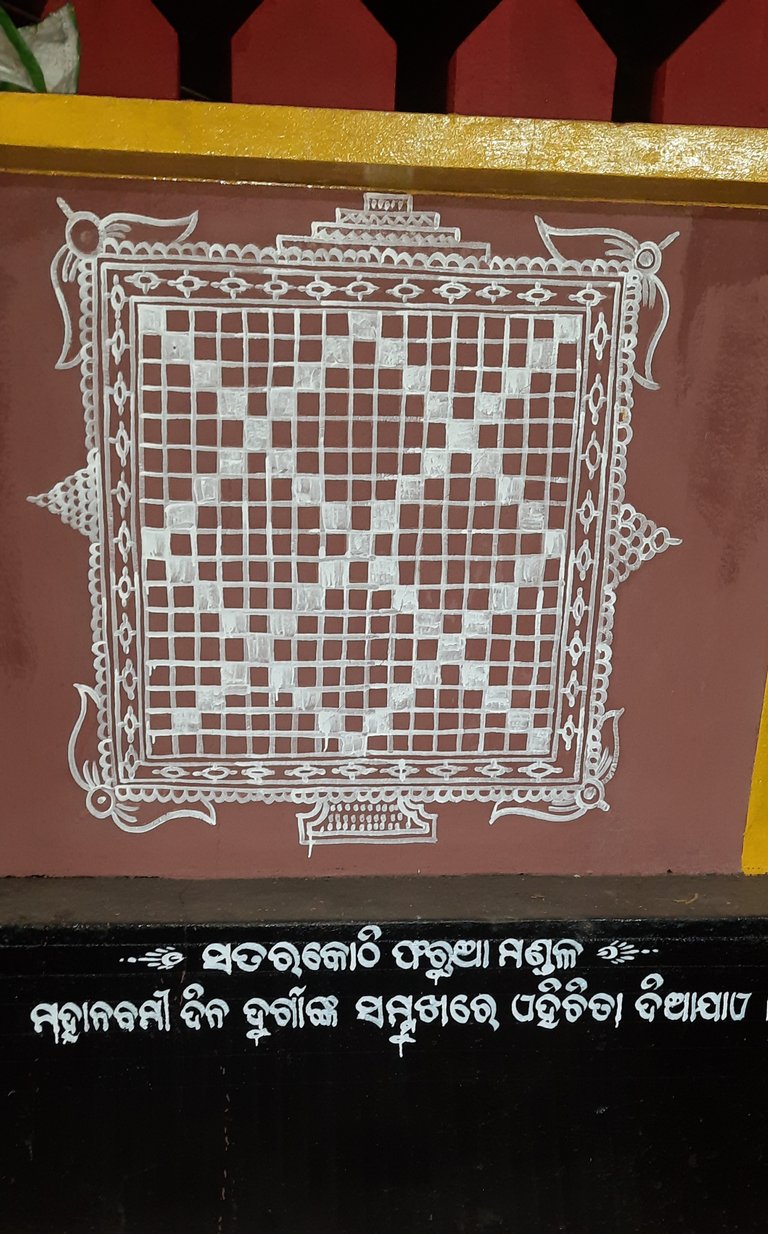The Satarkoti Phorua Mandal is an example of traditional street art in India that has deep cultural roots and meaning. This specific piece of art depicts a lotus flower, which is a common symbol in both Hindu and Buddhist cultures. It represents purity, enlightenment, and spiritual awakening. This particular artwork was created by first sketching the design in chalk on a brown background. The use of chalk was a strategic choice, as it allowed the artist to make changes and refine the design before making any permanent marks with the paint.

Once the artist was satisfied with the chalk design, they then painted over it with white paint. The white color provides a stark contrast against the brown background, emphasizing the intricate details of the lotus and representing the purity and enlightenment associated with it. In order to create a realistic representation of the flower, the artist had to pay close attention to detail and take their time to paint the delicate petals, stamen, and leaves with a steady hand and attention to proportion. The white paint also allowed the artist to create highlights and shadows, giving the lotus a sense of depth and dimension.
Creating street art, such as this Satarkoti Phorua Mandal With lotus painting, is about more than just artistic skill. It is also about communication and expression. By placing this artwork in a public space, the artist is making a statement about the cultural significance of the lotus flower and the role it plays in Indian spirituality. They are allowing people from all walks of life to experience and appreciate the artwork, which is one of the main purposes of street art.
This street art painting is a combination of technical skill and cultural significance. The process of sketching with chalk and painting with white paint is a traditional method that has been used in the artist's local community for many years. The creation of this piece of art is not only a display of the artist's technical abilities but also a celebration of their cultural heritage and the important role that the lotus flower holds in it.
The Satarkoti Phorua Mandal lotus flower art has long been a symbol of spiritual enlightenment and purity in Hindu and Buddhist cultures. It is often seen as a representation of the journey of the soul from ignorance and darkness to a state of enlightenment and wisdom. The lotus is unique in that it grows in muddy and murky waters, yet still produces a beautiful and pure flower that rises above the surface, symbolizing the journey of the soul towards spiritual enlightenment.
In Indian spirituality, the Satarkoti Phorua Mandal with lotus is often associated with the Hindu deity, Goddess Druga. The ninth day of the festival is dedicated to the worship of this deity and the creation of this street art is a way to honor and celebrate her. The depiction of the Satarkoti Phorua Mandal with lotus in the artwork serves to reinforce the idea of the flower's spiritual significance.
The Satarkoti Phorua Mandal street art is a beautiful and meaningful example of traditional Indian street art. The use of chalk and white paint to create the depiction of the lotus flower is a nod to the cultural significance of this symbol in Hindu and Buddhist cultures. The placement of this artwork in a public space allows people from all walks of life to experience and appreciate it, which is one of the main purposes of street art. The creation of this street art painting is a combination of technical skill and cultural significance, making it a unique and powerful expression of the artist's heritage and beliefs.

Cool work. It's necessary to be really patient to create a work of this meticulousness. I'm not 😀 Thanks for sharing this pic on The StreetArt Community.